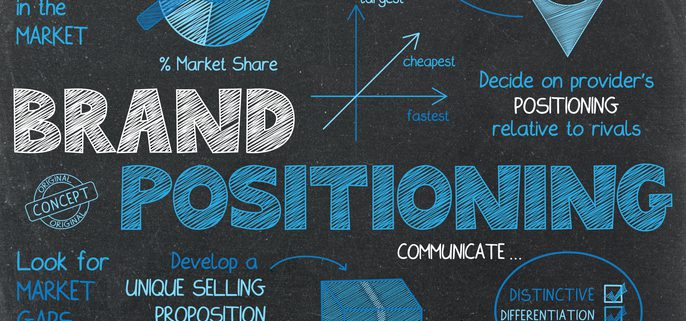
Crafting a Compelling Brand for Senior Living Success
In the competitive landscape of senior living, the significance of a well-crafted brand cannot be overstated. As the sector grows increasingly crowded, a robust brand can significantly elevate your community’s appeal, distinguishing it from competitors and fostering long-term success. This article delves into the importance of your senior living brand and explores the transformative impact branding has on senior living facilities.
Understanding the Significance of Your Brand
Consider senior living communities as more than just facilities; they are vibrant hubs where experiences and emotions play a pivotal role. Here, branding goes beyond mere aesthetics to forge a deep connection with potential residents and their families. A compelling brand acts as the community’s pulse, embodying its ethos and unique offerings.

The Transformative Effects of Branding
Branding transcends traditional marketing by crafting a unique identity that resonates on an emotional level with your target audience. For senior living communities, effective branding is not merely about listing features—it’s about crafting an engaging narrative that positions your community as a desirable, distinctive choice.
Strategic Brand Building Steps
Developing a lasting brand involves several critical steps, each contributing to a cohesive and appealing identity:
-
Identify Your Audience:
Part of an effective senior living marketing plan is to effectively segment and understand your target demographic. This clarity helps tailor your branding efforts to meet the specific needs, preferences, and lifestyles of potential residents.
-
Know Your Competitors:
Understanding the competitive landscape is crucial for setting your community apart. This means identifying not only the services and amenities offered by others but also their branding strategies. By doing so, you can emphasize your unique features and community benefits. You can also ensure these distinctions are front and center in your branding efforts.
-
Understand Your Identity:
Take a comprehensive look at what makes your community unique, such as its location, ethos, or exclusive offerings. This introspection should help crystallize a brand identity that not only reflects your community’s core values but also appeals to the emotional and practical preferences of potential residents.
-
Purpose-Driven Branding:
Your brand should be a reflection of your community’s mission and vision. It’s about more than aesthetics; it’s about conveying your purpose—why your community exists and how it improves residents’ lives. This purpose-driven branding resonates more deeply, creating a stronger emotional and rational appeal to families and residents.
-
Develop a Unique Personality and Voice:
Establish a distinctive personality for your community that can consistently be communicated across all platforms. Whether your tone is elegant, cheerful, cultured, or simple, it should authentically represent your community. It should attract residents who feel a natural alignment with your character.
-
Craft a Compelling Brand Story:
A compelling brand story is crucial as it forms an emotional bridge between your community and potential residents. Your story should encompass the founding, evolution, and unique aspects of your community, told in a way that is engaging and relatable. This narrative should paint a picture of a community that is not just a residence, but a home.
-
Design with Your Audience in Mind:
Design elements should not only be aesthetically pleasing but also reflect the core values and personality of your brand. Whether it’s the color palette, typography, or layout designs, each should communicate the essence of your community to the target demographic. This enhances the overall brand experience.
-
Integrate Your Brand Across All Platforms:
Ensure that your branding is consistent across every interaction with your community—be it digital, print, or face-to-face. Consistent branding strengthens your identity and reinforces your community’s character, making it easier for potential residents to understand and recall your brand, thereby fostering trust and recognition.
The Emotional Pull of Branding
Much like the iconic Pepsi and Coke rivalry, where brand identity could triumph over taste, the branding for senior living should create a lasting emotional bond with residents. This connection is what will make your community stand out—not just as a living space but as a preferred lifestyle choice.

Practical Benefits of Effective Branding
A well-established brand not only attracts residents but also enhances several other aspects of community management:
- Staff Attraction and Retention: A robust and resonant brand draws potential residents. It also appeals to potential staff members who are aligned with the community’s values and culture. By promoting a positive, distinctive workplace environment that is clearly articulated through your brand, you enhance employee satisfaction and loyalty. This strong workplace identity helps in retaining talented staff who are critical to the daily operations and overall success of your community, making your facility a preferred employer in the sector.
- Market Differentiation: In the highly competitive field of senior living, a distinct and well-articulated brand is essential for standing out. Highlight your community’s unique features, specialized services, and exceptional care. This allows your brand to act as a beacon that draws attention in a saturated market. This differentiation strategy is not just about being different; it’s about being recognizably better in ways that matter to potential residents and their families, thereby significantly enhancing your community’s market visibility and appeal.
- Resident Loyalty: The power of a strong brand extends beyond initial attraction to fostering deep, emotional connections with residents and their families. These connections are crucial as they can transform satisfied residents into vocal advocates for your community. A well-branded community that consistently delivers on its promises creates a loyal base of residents who are likely to share their positive experiences through word-of-mouth, greatly enhancing your community’s reputation and aiding in both retention and new resident acquisition.
Actualizing Your Brand
Working with a creative agency specializing in marketing tactics for senior living communities can elevate your branding effort. These professionals can provide the insights and expertise necessary to craft a distinctive brand that effectively communicates the unique values and experiences your community offers.
A Lasting Impression
Ultimately, your brand is more than just a marketing tool. It is a promise of quality, belonging, and an enriched lifestyle. By investing in comprehensive effective marketing strategies you are ensuring your community stands out in a competitive field. You are also building a foundation for meaningful and lasting relationships.
For those eager to enhance their community’s branding and market presence, we invite you to Contact Us for a free consultation. Together, we can develop a branding strategy that resonates well with your target audience and establishes your community as a leader in the senior living










 Collaborate With Media Outlets
Collaborate With Media Outlets
